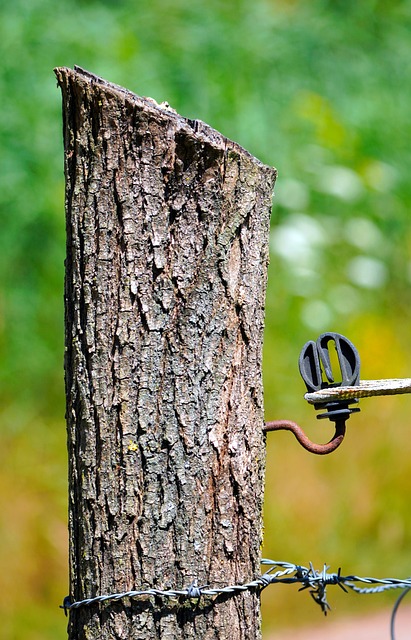Fence Staining and Sealing: A Comprehensive Guide to Revitalizing Your Wooden Fences
Enhancing the beauty and durability of your wooden fence doesn’t have to be a challenging task. This comprehensive guide delves into the art of fence staining and sealing, offering valuable insights for every step of the process. From understanding the benefits and exploring various stain types to providing a step-by-step application guide, we cover it all. Additionally, we emphasize the importance of sealing for long-lasting protection and offer maintenance tips to keep your fences looking their best. Whether you’re a DIY enthusiast or seeking professional advice, this article is your one-stop resource.
- Understanding Fence Staining: Benefits and Types
- Preparing Your Wooden Fence for Staining
- Choosing the Right Stain: Color and Finish
- Step-by-Step Guide to Effective Fence Staining
- Sealing for Protection: Importance and Application
- Maintenance Tips for Longevity of Stained Fences
Understanding Fence Staining: Benefits and Types
Understanding Fence Staining involves recognizing its numerous benefits for wooden fences. Firstly, staining enhances the visual appeal by offering a wide array of colors and finishes to match your landscape design or personal style. Secondly, it protects the wood from ultraviolet rays, moisture, and mold growth, thereby extending the fence’s lifespan. Regular staining can prevent the need for costly repairs and replacements.
There are several types of fence staining solutions available, each with distinct properties. Water-based stains are popular for their low odor and quick drying time, making them environmentally friendly and easy to apply. Oil-based stains, while more durable, take longer to dry and have a stronger scent. Semi-transparent and solid color stains provide varying levels of transparency, offering either subtle enhancements or bold transformations to your wooden fence.
Preparing Your Wooden Fence for Staining
Before applying any stain or sealant, preparing your wooden fence is a crucial step to ensure optimal results. Start by thoroughly cleaning the fence using a pressure washer or a stiff-bristled brush and warm soapy water. This removes dirt, mold, and mildew buildup, exposing the fresh wood surface. Allow the fence to dry completely to prevent any staining issues.
Next, sand the fence gently with fine-grit sandpaper to smooth out any rough patches and remove loose or flaking paint or finish. This process helps the stain penetrate better and creates a more even application. Cleaning and sanding also ensure that your wood is free from debris, enabling the sealant to bond effectively.
Choosing the Right Stain: Color and Finish
Choosing the right stain for your wooden fence is a crucial step in enhancing its beauty and prolonging its lifespan. Consider the color you desire, ranging from natural wood tones to vibrant shades, each offering a distinct aesthetic appeal. Dark colors can add drama and depth, while lighter hues provide a more subtle and natural look. The finish is equally important; opt for a semi-transparent or transparent stain for a more natural appearance, allowing the wood grain to show through, or choose an opaque finish for complete coverage and added protection against elements.
Match your desired color and finish with the type of wood on your fence—some stains adhere better to specific types—and take into account factors like sun exposure, as UV rays can affect color fading over time. Always test a small area first to ensure the stain meets your expectations and reacts well with the fence’s material and condition.
Step-by-Step Guide to Effective Fence Staining
To achieve effective fence staining, follow this step-by-step guide. Begin by cleaning your wooden fence to remove any dirt, dust, or debris using a pressure washer or a mild detergent solution. This ensures that the stain adheres properly to the wood’s surface. Next, sand down the fence gently to smooth out any rough spots and open up the wood’s pores for better absorption of the stain.
Rinse the fence thoroughly with water after sanding to eliminate any residual dust. Then, apply a coat of high-quality wood stain using a brush or a roller, following the manufacturer’s instructions on coverage and drying time. Ensure even coverage by overlapping strokes. After the initial coat dries, add additional coats as needed for the desired shade and protection.
Sealing for Protection: Importance and Application
Sealing is an essential step in fence staining and maintenance, offering crucial protection against the elements. It acts as a shield, preventing water, UV rays, and extreme temperatures from penetrating the wood’s surface. This is particularly vital for wooden fences exposed to varying weather conditions, as sealing helps maintain their aesthetic appeal and structural integrity.
The application process involves cleaning and preparing the fence, followed by the careful selection and even distribution of a suitable sealer. Different types of sealers are available, each with unique properties designed to address specific needs. Once applied, the sealer forms a protective barrier, enhancing the fence’s durability and extending its lifespan, ensuring it remains vibrant and robust for years to come.
Maintenance Tips for Longevity of Stained Fences
Regular maintenance is key to keeping your stained fence looking its best for years to come. After staining, allow the finish to cure completely before applying a protective sealant. This will create a durable barrier against the elements. Once a year, or as needed, clean the fence with a soft brush and mild detergent to remove dirt and grime. Avoid using harsh chemicals that could strip the stain. Reapply sealant every two to three years, or more frequently in areas exposed to extreme weather conditions, to maintain protection. By following these simple steps, you can ensure your wooden fence stays vibrant and weathered-resistant, enhancing the overall aesthetic of your outdoor space.
